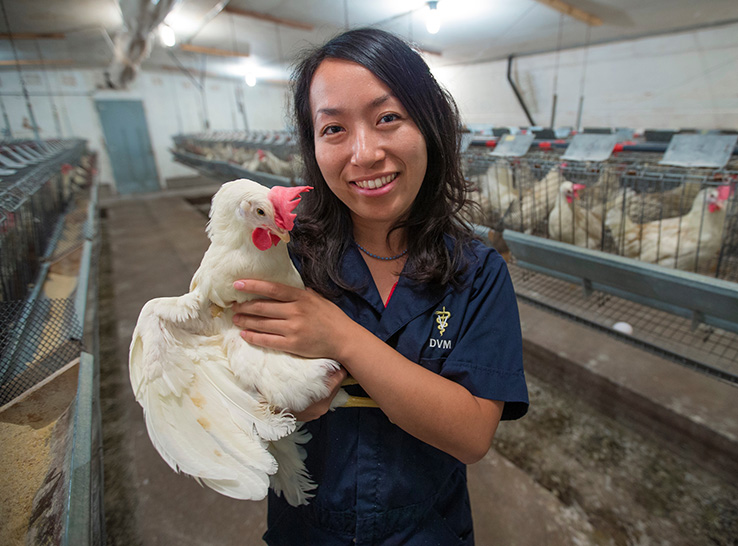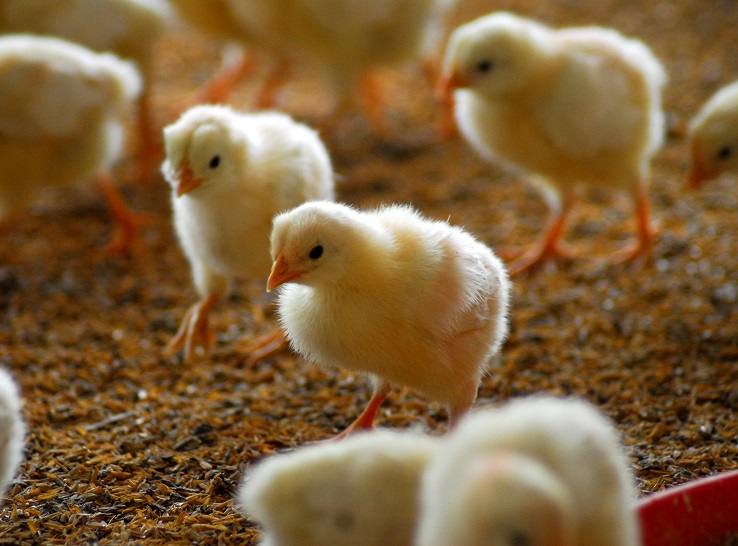Histomoniasis is nothing new to turkey producers, yet treatment options remain a major challenge. Bans of therapeutic and prophylactic compounds in several countries in recent years have only added to outbreak risks, emphasizing the need for alternative control strategies.
“We might not have a cure, but we do have a better understanding of this disease and numerous measures that can be used to reduce outbreak frequency,” said Catherine Fudge, a doctoral student in poultry science at the University of Georgia.
Having participated in several histomoniasis-related studies carried out within the laboratory of her mentor, Chongxiao (Sean) Chen, DVM, PhD, Fudge presented their work at the 2023 Poultry Science Association meeting.
Current measures to minimize outbreaks
Because histomoniasis is caused by the protozoan Histomonas meleagridis, minimizing outbreaks must begin with preventing vectors such as worms, beetles and “pretty much any insect under the sun from entering poultry facilities,” Fudge emphasized. “This should be at the top of our list; it’s one of the most valuable things that we can control.”
Specifically, she recommended establishing a pest-control program using approved, long-lasting pesticides, applied at the right time such as after heavy rains or when nearby poultry sites will be cleaning out facilities. “It’s been shown to reduce the outbreak risk of a turkey farm,” she added.
Installing migration fences and quickly culling infected birds also can help reduce transmission risks.
Minimizing stressors, such as coccidiosis, fasting and improper nutrition, can decrease mortality and promote recovery in affected birds. “We’ve seen in some research that stress may impact how severe mortality rates are during an outbreak,” Fudge noted.
Lack of biosecurity compliance
Fudge cautioned that effective biosecurity and pest-control programs are only as good as the compliance behind them. Unfortunately, these break down too often, and she noted that a well-written, detailed plan doesn’t equal success. The key is to emphasize which steps are priorities and their role in controlling histomoniasis.
Educating and training caretakers to identify sick birds is also part of the control effort — and that isn’t easy. Young birds tend to exhibit more classical signs — lethargy; depression; unwilling to eat, drink or move. But things get more challenging as birds age. “Also, if you can’t find every single sick bird, you won’t be able to properly cull as many as you need to reduce transmission,” she said.
Fudge and colleagues found that for 12-week-old tukeys, it took almost 11 days post-infection for trained observers to effectively identify birds sick with histomoniasis. That’s a problem because Histomonas shedding begins within 24 to 48 hours of infection.
The researchers wanted to see if a bird’s temperature could provide an earlier signal of infection. They inserted sensors into infected and non-infected birds to track their core temperatures for 14 days. The results showed a fever spike of 2.5°C between 5 and 8 days post-infection. While it’s not practical to place sensors into every turkey in commercial production, future non-invasive technology may be able to track body temperature changes and provide early feedback.
Equally important is to quickly remove dead birds from the flock. Behavioral studies have shown that flock activity increases around dead or dying birds.
“This may increase the amount of contact that healthy birds are having with the Histomonas cells secreted in the feces,” Fudge noted. “With very high mortality rates of 400 to 600 birds a day during an outbreak, farmers aren’t able to remove them quickly enough.” Robots may be an option for this task in the future, she added.
Looking for alternatives
Feed additives have shown some potential for controlling histomoniasis. Over the past 6 years, the laboratory of Drs. Robert Beckstead and Chen studied 132 feed-additive products from 28 companies as possible treatments for histomoniasis. In total, 197 trials were conducted on products such as functional carbohydrates, phytogenics, minerals, prototype products and mixtures, and more.
Some of the products show different levels of reduced mortality, “but really only during very mild cases,” Fudge noted. “From the meta-analysis results, as mortality or expected mortality begins to increase, most of the treatments lose their efficacy. So, while some of the feed additives showed potential, we still need to find a therapeutic treatment for histomoniasis.”
The chicken connection
There has long been a connection between long-living chickens, turkeys and histomoniasis infection.
“Research has shown a connection between the distance of long-living chickens, namely chickens that have access to the ground and can cycle Heterakis gallinarum, and the histomoniasis outbreak risk in turkey farms,” Fudge noted. The closer the production sites, the greater the risk of repeat outbreaks. But turkey farms surrounded by farmland where long-living chicken litter is spread also have an equal outbreak risk.
The Chen lab did a field investigation involving 15 organic laying-hen farms, where researchers collected five birds from each farm and counted Heterakis (the vector for histomoniasis) in the ceca and litter. They found 100% of the birds positive for Heterakis and a 63% positive rate in the litter from the same house.
“Overall, long-living chickens are an important reservoir for histomoniasis. We don’t know the long-term impacts on fertility, production or health in chickens or broiler breeders,” Fudge noted. “This is not a blame game; rather, it’s a good opportunity for the two industries to work together and develop a program that can apply to both groups.”
For future consideration
Following up on an interesting report from a Canadian turkey producer, Fudge and her colleagues completed benchtop studies testing cedar and pine shavings, as well as cedar extract, on the behavior of darkling beetles, which can transmit Histomonas.
In the first test, the beetles moved throughout the pine shavings but avoided the cedar shavings. Repeating the test five times, they found cedar shavings at 30% moisture level had a repellency rate of more than 80% compared to the negative control group in pine shavings at 30% moisture.
Next, they looked at cedar extract (hydrosol) added to pine shavings. An addition of 5 mL and 10 mL (25% and 50%, respectively) of cedar hydrosol to pine shavings showed a similar response in beetle behavior as the cedar shavings. “We wanted to take it a step further and look at contact toxicity,” Fudge said. “It repels beetles, but maybe it also can kill them.”
They ran an 8-week study placing larva in contact with a variety of substrates and found that treatments containing any form of cedar led to very high larva mortality rates — most exceeding 75%.
The final study looked at the impact of cedar extracts from the Eastern red cedar and Western red cedar on cell viability in vitro. Eastern red cedar had no impact on cell survival, but Western red cedar extract at 2.5%, 5% and 10% led to significant reductions in cell numbers but did not completely remove all cells. More study is needed.
For now, the focus remains on finding effective treatments, Fudge said.
“However, we cannot ignore the role of feeding programs, stressors and management in disease progression and transmission, which need to be integrated with research projects, while looking for intervention strategies,” she added. “We need more fundamental research that we can apply to challenges in the field, and to form more collaborative disease-control and management efforts between academics, turkey and chicken producers, and allied industry.”








